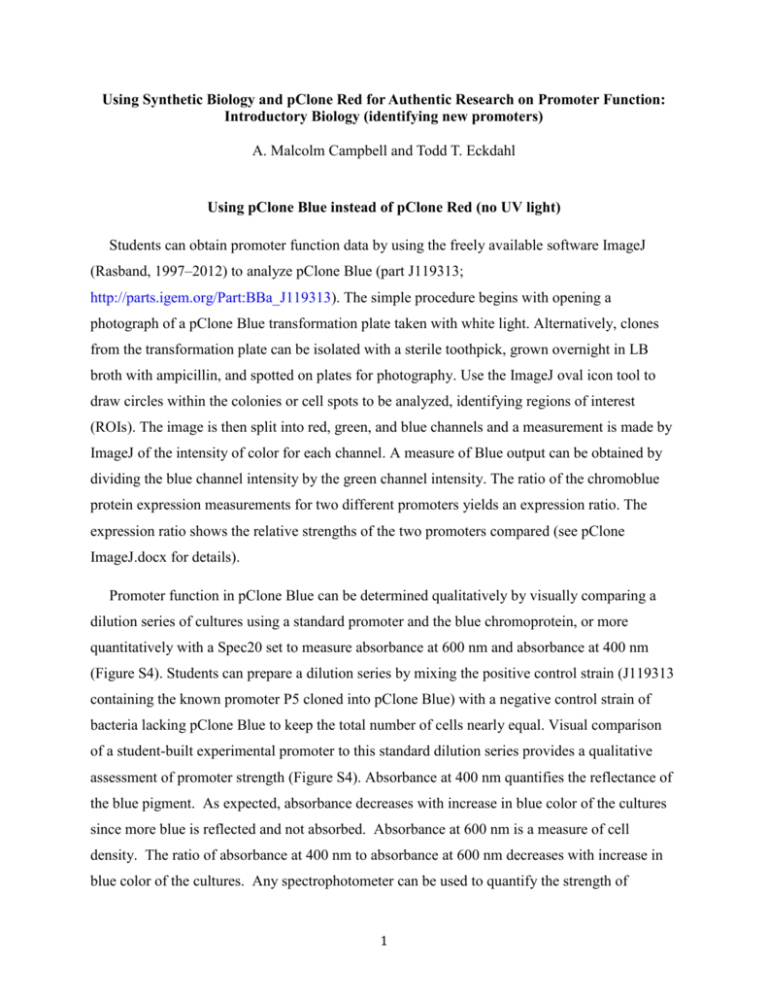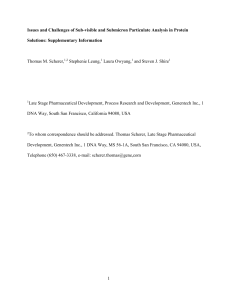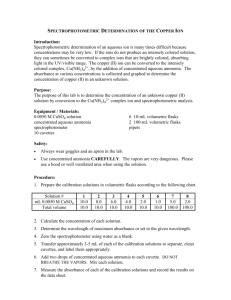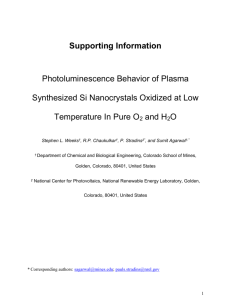(no UV light).
advertisement

Using Synthetic Biology and pClone Red for Authentic Research on Promoter Function: Introductory Biology (identifying new promoters) A. Malcolm Campbell and Todd T. Eckdahl Using pClone Blue instead of pClone Red (no UV light) Students can obtain promoter function data by using the freely available software ImageJ (Rasband, 1997–2012) to analyze pClone Blue (part J119313; http://parts.igem.org/Part:BBa_J119313). The simple procedure begins with opening a photograph of a pClone Blue transformation plate taken with white light. Alternatively, clones from the transformation plate can be isolated with a sterile toothpick, grown overnight in LB broth with ampicillin, and spotted on plates for photography. Use the ImageJ oval icon tool to draw circles within the colonies or cell spots to be analyzed, identifying regions of interest (ROIs). The image is then split into red, green, and blue channels and a measurement is made by ImageJ of the intensity of color for each channel. A measure of Blue output can be obtained by dividing the blue channel intensity by the green channel intensity. The ratio of the chromoblue protein expression measurements for two different promoters yields an expression ratio. The expression ratio shows the relative strengths of the two promoters compared (see pClone ImageJ.docx for details). Promoter function in pClone Blue can be determined qualitatively by visually comparing a dilution series of cultures using a standard promoter and the blue chromoprotein, or more quantitatively with a Spec20 set to measure absorbance at 600 nm and absorbance at 400 nm (Figure S4). Students can prepare a dilution series by mixing the positive control strain (J119313 containing the known promoter P5 cloned into pClone Blue) with a negative control strain of bacteria lacking pClone Blue to keep the total number of cells nearly equal. Visual comparison of a student-built experimental promoter to this standard dilution series provides a qualitative assessment of promoter strength (Figure S4). Absorbance at 400 nm quantifies the reflectance of the blue pigment. As expected, absorbance decreases with increase in blue color of the cultures since more blue is reflected and not absorbed. Absorbance at 600 nm is a measure of cell density. The ratio of absorbance at 400 nm to absorbance at 600 nm decreases with increase in blue color of the cultures. Any spectrophotometer can be used to quantify the strength of 1 student-generated promoters cloned into pClone Blue. The final values for RFP fluorescence and blue chromoprotein reflectance are given as a ratio with cell density values in the denominator. Supplemental Figure S4. Quantifying pClone Blue transcription. A. Tubes contain cultures of E. coli of the indicated dilutions with increasing levels of amilCP Blue to illustrate a standard curve for qualitatively measuring promoter activity with pClone Blue. B. Absorbance values for the cultures were obtained with a Spec20. Absorbance at 400 nm is a measure of amilCP Blue reflectance and absorbance at 600 nm measures cell density. C. The ratio of the absorbance value at 400 nm to absorbance at 600 nm plotted for the five standard cultures. 2








